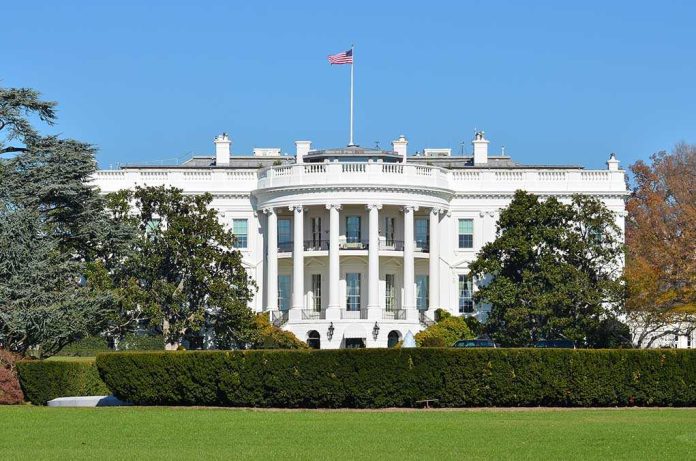
A new White House directive signals permanent federal layoffs instead of temporary furloughs if Congress misses the spending deadline—an unprecedented move that puts government size and accountability at the center of a heated national showdown.
Story Snapshot
- The OMB memo orders agencies to prepare for permanent job cuts, not just furloughs, if a budget deal isn’t reached by September 30.
- This marks the first time a shutdown threat is tied to lasting reductions in the federal workforce, aligning with President Trump’s agenda to shrink government.
- About 154,000 federal workers could lose their jobs, with agencies directed to submit reduction-in-force plans and identify vulnerable programs.
- The move intensifies the standoff with congressional Democrats, who call it intimidation and vow legal challenges.
White House Memo Marks Radical Shift from Past Shutdown Protocols
The Office of Management and Budget (OMB) circulated a memo to all federal agencies in late September 2025, instructing them to prepare for mass layoffs—not the temporary furloughs Americans have come to expect in government shutdowns. This directive, coming from a Trump administration determined to rein in federal bloat and inefficiency, explicitly orders agencies to draft reduction-in-force plans and pinpoint staff and programs at risk of permanent elimination. The memo targets positions not shielded by mandatory appropriations, signaling a fundamental transformation in how shutdowns could impact the federal workforce and public services.
Previous shutdowns, notably those in 2013 and 2018-2019, led to temporary disruptions with employees returning to work and receiving back pay once funding was restored. The new approach breaks sharply with this precedent. By tying the looming shutdown to lasting job losses, the administration leverages the crisis to force action on its priorities, including significant workforce reductions. This escalation is designed to pressure Congress, especially Democrats, to accept a leaner, more accountable government—a core conservative objective. The administration’s move has already led agencies to prepare lists of at-risk employees and programs, with an estimated 154,000 workers facing termination or buyouts if lawmakers fail to act on time.
Political Standoff and Stakeholder Reactions Intensify as Deadline Nears
President Trump and senior White House officials are using the shutdown threat to press for spending cuts and tighter fiscal discipline. By instructing the OMB to demand agency RIF plans, the administration asserts executive authority in negotiations with Congress, where Democrats argue the memo is an intimidation tactic and a violation of established norms. Senate Majority Leader Chuck Schumer has publicly condemned the move, predicting a wave of legal challenges if layoffs proceed. Meanwhile, federal employee unions and advocacy groups warn of the human and economic toll, while administration supporters emphasize the urgent need to address government waste and restore constitutional checks on runaway spending.
As the September 30 deadline nears, political leaders from both parties are trading blame in the media. The Trump administration frames the memo as a necessary corrective after years of left-leaning overspending and bureaucratic overreach, while Democrats and their allies claim it weaponizes the shutdown for partisan gain. The resulting uncertainty has left federal workers, contractors, and communities dependent on government programs bracing for disruption, and has heightened public scrutiny of Congress’s ability to fulfill its most basic function: keeping the government funded and accountable to the people.
Long-Term Impact: Government Downsizing and Legal Battles on the Horizon
If Congress fails to reach a deal, the most immediate impact will be the loss of income for tens of thousands of federal workers, along with interruptions to government services, which could ripple out to local economies and vulnerable communities. In the long run, the move could permanently reduce the size and scope of the federal workforce, aligning with conservative calls for a more limited, efficient government. However, critics warn of lost institutional knowledge and the risk that mass layoffs could politicize the civil service, undermining continuity and public trust. Legal experts predict a wave of court challenges, with Democrats citing due process and labor protections, while administration allies maintain that the executive has the authority to restructure the workforce as needed to protect taxpayer interests.
Amid ongoing negotiations, the administration’s hardline stance has already altered the dynamics in Washington, placing unprecedented pressure on Congress to avoid a shutdown or face the fallout of permanent job cuts. For conservatives frustrated by years of unchecked government growth and what they see as a lack of accountability, the memo represents a bold step toward restoring constitutional limits and putting taxpayers first. The coming days will test whether lawmakers can break the deadlock—or whether this new approach will set a lasting precedent for how America handles budget crises and government reform.
Sources:
White House warns of mass layoffs if government shutdown hits – CNN
White House Memo Sparks Federal Job Cuts as Shutdown Looms – Azat TV
White House memo outlines layoffs if shutdown occurs – DailyFly
White House Trump layoffs OMB government shutdown – CBS News
White House Trump layoffs OMB government shutdown – CBS News (non-AMP)
White House directs agencies to prepare for layoffs as shutdown deadline approaches – KPUA









